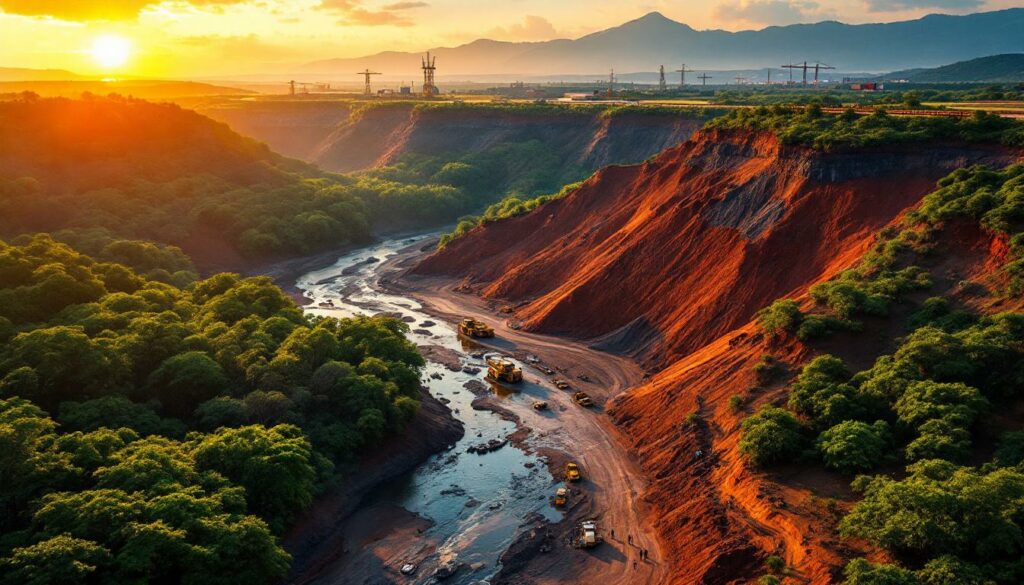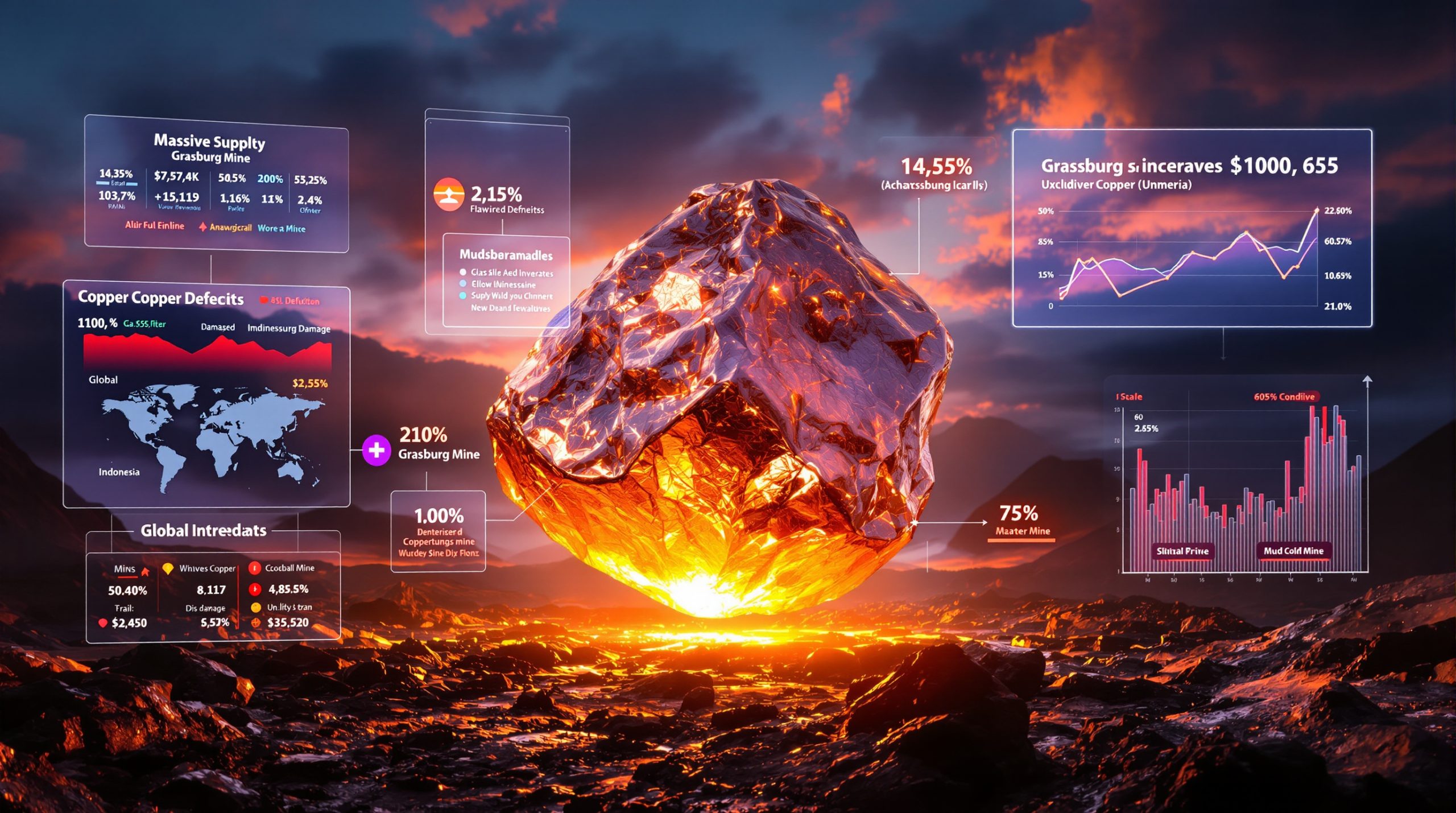Understanding Guinea's Simandou: The World's Largest Untapped Iron Ore Project
Nestled in the lush mountains of southeastern Guinea lies Simandou, a massive iron ore deposit that has captured global attention for its exceptional size and quality. This remote region holds what many industry experts consider the world's largest untapped iron ore reserves, with over 8.6 billion tons of high-grade ore awaiting development. Yet Simandou's potential comes with considerable responsibility—balancing economic development with environmental protection in one of West Africa's most ecologically sensitive areas.
The Geographic and Geological Significance
Simandou's iron ore deposits stretch across a 110-kilometer mountain range in Guinea's forest region. What makes these deposits particularly valuable is their high iron content—averaging 65-68% compared to the industry standard of 58-62%—making them among the highest-grade iron ore reserves globally. This quality translates to reduced processing requirements and potentially lower environmental impacts compared to lower-grade operations.
The deposits are divided into four blocks, each representing a different section of this massive resource:
- Blocks 1 and 2: Northern section, controlled by Winning Consortium Simandou (WCS), backed by Chinese companies including China Baowu Steel Group
- Blocks 3 and 4: Southern section, managed by Rio Tinto Plc and Aluminum Corp. of China (Chinalco)
The Guinean government maintains a 15% stake across all blocks, ensuring national participation in this strategic resource development.
Key Stakeholders and Development Timeline
The journey to develop Simandou has been lengthy and complex, marked by ownership disputes, legal challenges, and geopolitical considerations that have delayed production for over two decades since the deposits' discovery in the 1990s.
Current Ownership Structure
Winning Consortium Simandou, formed in 2020, represents a significant Chinese investment in African resources. The consortium includes:
- Singapore's Winning International Group
- China Baowu Steel Group (China's largest steelmaker)
- Guinea's UMS International
- China's Weiqiao Aluminum
For blocks 3 and 4, the Simfer joint venture comprises:
- Rio Tinto (53%)
- Aluminum Corporation of China (Chinalco) (32%)
- Government of Guinea (15%)
Historical Development Challenges
Simandou's development has been plagued by:
- Political instability: Multiple regime changes in Guinea affecting mining policies
- Infrastructure requirements: The $15+ billion needed for mining, rail, and port facilities
- Legal disputes: Including the high-profile case involving BSGR and Vale
- Market fluctuations: Iron ore price trends affecting investment decisions
"Simandou represents both enormous opportunity and significant responsibility for Guinea. The economic potential is transformative, but only if development proceeds with proper environmental and social safeguards in place." — Mining industry analyst specializing in West African resource development
Environmental Concerns Surrounding Simandou
Recent studies have highlighted growing environmental issues associated with Simandou's development. In July 2025, Advocates for Community Alternatives (ACA), a prominent NGO working with mining-affected communities, published concerning findings about the project's environmental impacts.
Water and Soil Contamination
The ACA study revealed several serious environmental issues:
- Water samples collected around the iron ore deposits showed high levels of acidity (pH levels below 5.5)
- Bacterial contamination detected in groundwater sources exceeded WHO safety standards
- Soil samples indicated heavy metal concentrations above background levels
- Sediment runoff into waterways increased turbidity in previously pristine streams
These findings raise significant concerns about the long-term environmental footprint of mining operations in this sensitive region.
Impact on Coastal Communities
The environmental effects extend beyond the mining site itself. According to the ACA report:
- Coastal settlements near the port construction zone reported fishing area contamination
- Marine ecosystem disruption has affected local fisheries' productivity
- Infrastructure development has caused structural damage to buildings, with documented cracks in community structures
- Dust and noise pollution have increased significantly in previously quiet rural areas
Biodiversity Considerations
The Simandou mountain range hosts remarkable biodiversity, including:
- Over 200 endemic plant species
- Critical habitat for endangered primates including the western chimpanzee
- Diverse forest ecosystems that act as important carbon sinks
- Watersheds that supply fresh water to thousands of local residents
The challenge lies in balancing resource extraction with protection of these invaluable natural capital in mining operations.
Corporate Environmental Responsibility Approaches
In response to mounting environmental concerns, the mining companies involved have issued statements outlining their commitment to responsible practices.
Winning Consortium Simandou's Environmental Commitments
Following the publication of the ACA study, Winning Consortium issued a formal response stating they are "committed to developing the project responsibly, in accordance with Guinean regulations and international standards." Their approach includes:
- Implementation of comprehensive water management systems
- Regular environmental monitoring and public reporting
- Adoption of dust suppression technologies
- Community engagement and benefit-sharing programs
The consortium emphasized their pledge to ensure "sustainable and inclusive benefits for the Guinean people," though specific details of implementation remain limited in public communications.
Rio Tinto's Environmental Management Framework
Rio Tinto, managing blocks 3 and 4, has stated they are "fully committed to minimizing the impacts of our operations through preventive, mitigation, and compensation measures, in full compliance with national legislation and international standards."
Their approach incorporates:
- Environmental and Social Impact Assessments (ESIAs) conducted to international standards
- Biodiversity offset programs to compensate for unavoidable habitat impacts
- Water resource management systems designed for minimal consumption and contamination
- Community consultation frameworks with multiple feedback mechanisms
While these commitments sound promising, environmental advocates emphasize the need for transparent implementation and independent verification.
Balancing Economic Benefits and Environmental Costs
Simandou presents a classic development dilemma: weighing substantial economic benefits against potential environmental degradation.
Economic Transformation Potential
For Guinea, one of the world's poorest countries despite vast mineral wealth, Simandou represents transformative economic potential:
- GDP growth: Projected 15-20% increase in national GDP when fully operational
- Employment: Estimated 45,000 direct and indirect jobs during construction phase
- Infrastructure: 650km trans-Guinean railway and deep-water port with broader economic benefits
- Government revenue: Potential $1.5-2 billion in annual tax and royalty payments
These economic benefits could substantially improve living standards in a country where over 40% of the population lives below the poverty line.
Long-term Environmental Considerations
However, the environmental costs require careful consideration:
- Ecosystem disruption: Mining operations will permanently alter mountain landscapes
- Water security: Potential long-term impacts on water quality and availability
- Climate implications: Deforestation and carbon emissions from operations
- Post-mining legacy: Ensuring proper site remediation and sustainable closure
Disclaimer: Economic projections represent estimates based on current market conditions and may vary significantly depending on iron ore prices, production volumes, and implementation timelines.
Responsible Mining Practices in Action
Effective environmental management requires comprehensive systems addressing all aspects of mining operations.
Water Management Protocols
Water represents one of the most critical environmental considerations in mining operations:
- Baseline assessment: Comprehensive monitoring of pre-mining water quality and quantity
- Closed-loop systems: Recycling process water to minimize consumption and discharge
- Treatment technologies: Advanced filtration and purification before any environmental release
- Monitoring networks: Continuous real-time monitoring upstream and downstream of operations
Land and Biodiversity Protection
Responsible land management includes:
- Minimized footprint: Utilizing planning techniques that reduce the overall disturbed area
- Progressive rehabilitation: Restoring mined areas concurrently with ongoing operations
- Biodiversity offsets: Protecting and enhancing similar ecosystems to compensate for mining impacts
- Endemic species protection: Special measures for rare or threatened species in the project area
Community Engagement Framework
Genuine community involvement requires:
- Free, prior, informed consent: Ensuring communities understand and accept project impacts
- Participatory monitoring: Including local stakeholders in environmental oversight
- Benefit-sharing mechanisms: Direct community investment from project revenues
- Accessible grievance procedures: Clear pathways for addressing community concerns
International Standards for Sustainable Mining
The global mining industry has developed numerous frameworks and standards to guide responsible operations.
Key Frameworks and Principles
Mining companies at Simandou should adhere to established international standards:
| Framework | Focus Areas | Relevance to Simandou |
|---|---|---|
| IFC Performance Standards | Environmental and social risk management | Comprehensive safeguards for biodiversity, communities, and cultural heritage |
| Extractive Industries Transparency Initiative (EITI) | Revenue transparency and governance | Ensuring Guinea's mineral wealth benefits its citizens |
| International Council on Mining and Metals (ICMM) Principles | Sustainable development in mining | Industry best practices for environmental management |
| Equator Principles | Environmental and social risk in project financing | Guidelines for financial institutions funding the project |
Successful Implementation Case Studies
While Simandou presents unique challenges, lessons can be drawn from other major African mining developments:
- Debswana (Botswana): Demonstrates successful partnership between government and mining companies with strong revenue management
- Kibali Gold Mine (DRC): Implemented innovative water management systems in a sensitive ecosystem
- Richards Bay Minerals (South Africa): Pioneered progressive rehabilitation techniques in coastal environments and provided valuable mineral beneficiation insights
These examples provide valuable insights for establishing Simandou as a model of responsible mining.
Creating a Model for Responsible Resource Development
For Simandou to become a positive example of mining development, several key elements must be established.
Independent Monitoring Systems
Transparency and accountability require:
- Third-party verification: Independent experts assessing environmental performance
- Real-time data sharing: Public access to monitoring results through digital platforms
- Multi-stakeholder oversight: Including government, communities, civil society, and international observers
- Regular public reporting: Consistent disclosure of environmental indicators and incidents
Technological Innovation Opportunities
Modern mining operations can leverage technology to improve environmental outcomes:
- Remote sensing: Satellite and drone monitoring of environmental impacts
- AI-powered prediction: Advanced modeling of potential environmental risks
- Autonomous equipment: Reducing human exposure and optimizing resource efficiency
- Blockchain traceability: Verifying responsible sourcing throughout the supply chain
Current Status and Future Outlook
Despite decades of delays, Simandou appears to be progressing toward production, though significant hurdles remain.
Development Progress and Timelines
The project has seen accelerated activity in recent years:
- Infrastructure development: Railway construction commenced in 2023 with approximately 25% completion
- Port facilities: Initial preparation work underway at the Matakong deepwater port site
- Mining preparation: Access roads and preliminary site work in early stages
- Production target: First ore shipments tentatively scheduled for 2026-2027
Regulatory Oversight Mechanisms
Effective governance requires robust oversight:
- Environmental permits: Regular review and renewal requirements
- Compliance monitoring: Government inspections and auditing programs
- Financial assurance: Bonds and guarantees for environmental remediation
- Civil society participation: NGO involvement in monitoring and assessment
"The ultimate test of Simandou's success will not be measured solely in tons of ore shipped or dollars generated, but in whether the project can operate while protecting Guinea's natural heritage and improving lives in host communities." — Environmental policy expert focusing on extractive industries
Frequently Asked Questions About Responsible Mining at Simandou
How will water resources be protected during mining operations?
Mining companies have committed to comprehensive water management including:
- Separate systems for clean and process water to prevent contamination
- Regular monitoring of groundwater and surface water quality
- Stormwater management systems to prevent erosion and sedimentation
- Water treatment facilities meeting international discharge standards
- Independent verification of compliance with water quality parameters
What compensation is available for affected communities?
Both mining consortia have outlined community benefit programs including:
- Resettlement packages for directly displaced households
- Community development funds supporting local infrastructure
- Skills training and local employment prioritization
- Business development support for local enterprises
- Cultural heritage preservation initiatives
How will the project's environmental performance be measured?
Environmental performance monitoring includes:
- Key indicators tracking water quality, air quality, biodiversity, and rehabilitation progress
- Regular public disclosure of monitoring results
- Independent third-party verification of company-reported data
- Community participatory monitoring programs
- Annual sustainability reporting to international standards
What happens after mining operations conclude?
Post-mining planning addresses:
- Progressive rehabilitation throughout the mine life
- Detailed closure planning updated regularly
- Financial provisions for long-term site management
- Alternative economic development strategies for affected communities
- Ongoing monitoring requirements extending beyond operational phase with future mine reclamation innovations
Balancing Development and Protection in Guinea's Mining Future
The Simandou iron ore project represents both extraordinary opportunity and significant responsibility. For Guinea, the economic benefits could be transformative—potentially doubling GDP, creating tens of thousands of jobs, and developing critical infrastructure that serves beyond the mining sector.
Yet these benefits must not come at the expense of irreversible environmental damage or community hardship. The recent findings of water and soil contamination, fishing area pollution, and infrastructure damage highlight the very real risks associated with large-scale resource development.
Responsible mining at Guinea's Simandou requires unwavering commitment to environmental protection, transparent operations, meaningful community engagement, and adherence to international best practices. Only through balanced development that respects both human needs and ecological limits can Simandou fulfill its promise of sustainable prosperity for Guinea and contribute to the broader mining industry evolution.
Disclaimer: This article presents information about an ongoing development project. Environmental conditions, corporate commitments, and project timelines may change. Readers are encouraged to seek updated information from official sources when making decisions related to the Simandou project.
Want to Profit from the Next Major Mineral Discovery?
Discovery Alert's proprietary Discovery IQ model instantly identifies significant ASX mineral discoveries, offering actionable insights on opportunities like the next Simandou before the broader market catches on. Explore how historic discoveries have generated substantial returns by visiting Discovery Alert's dedicated discoveries page.




